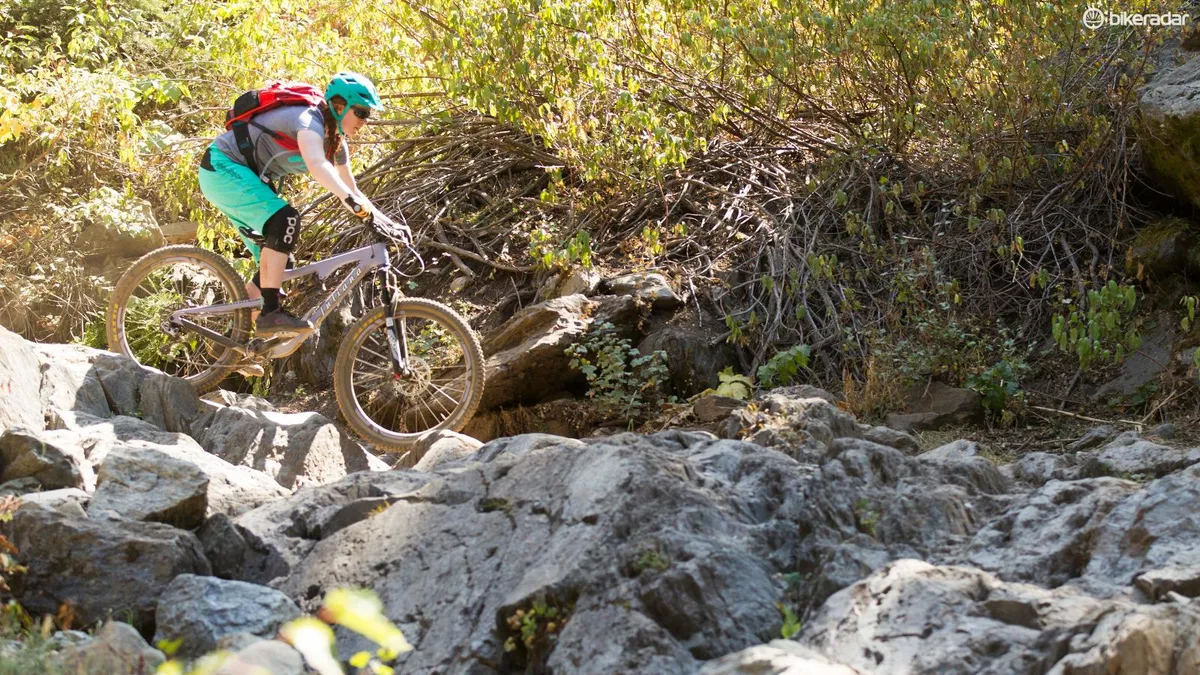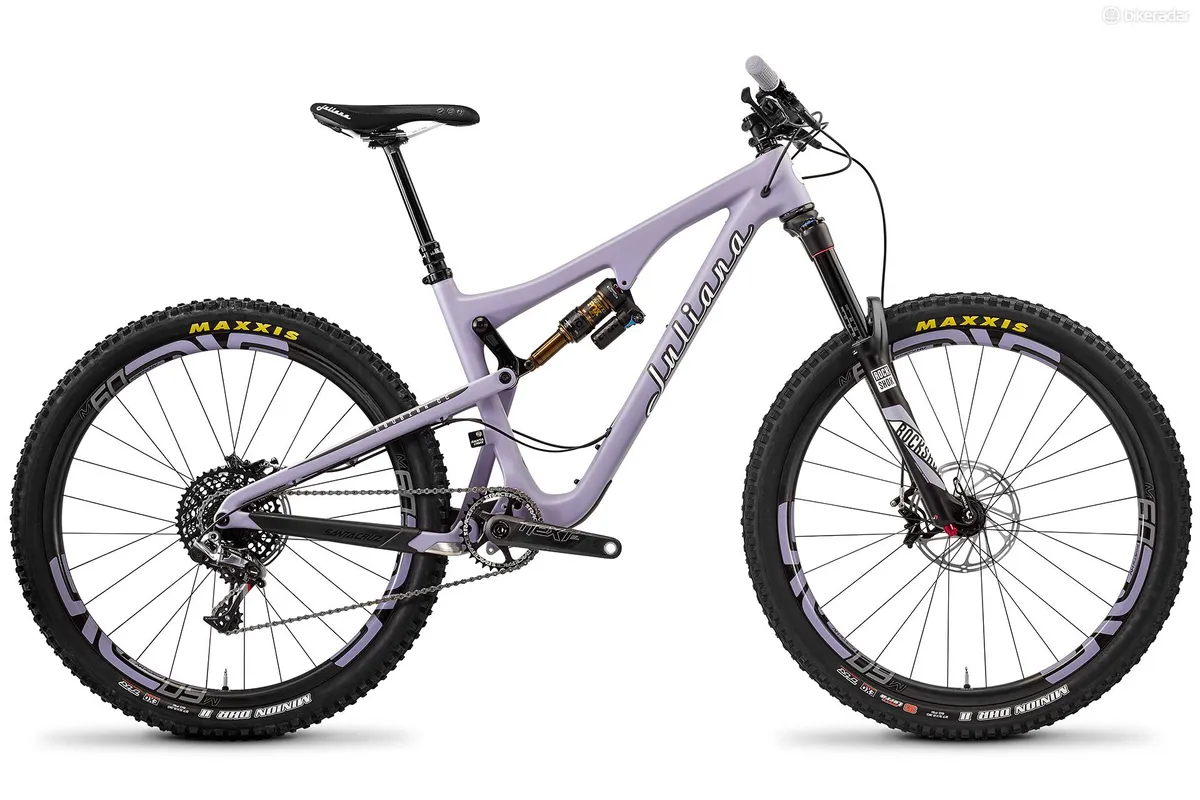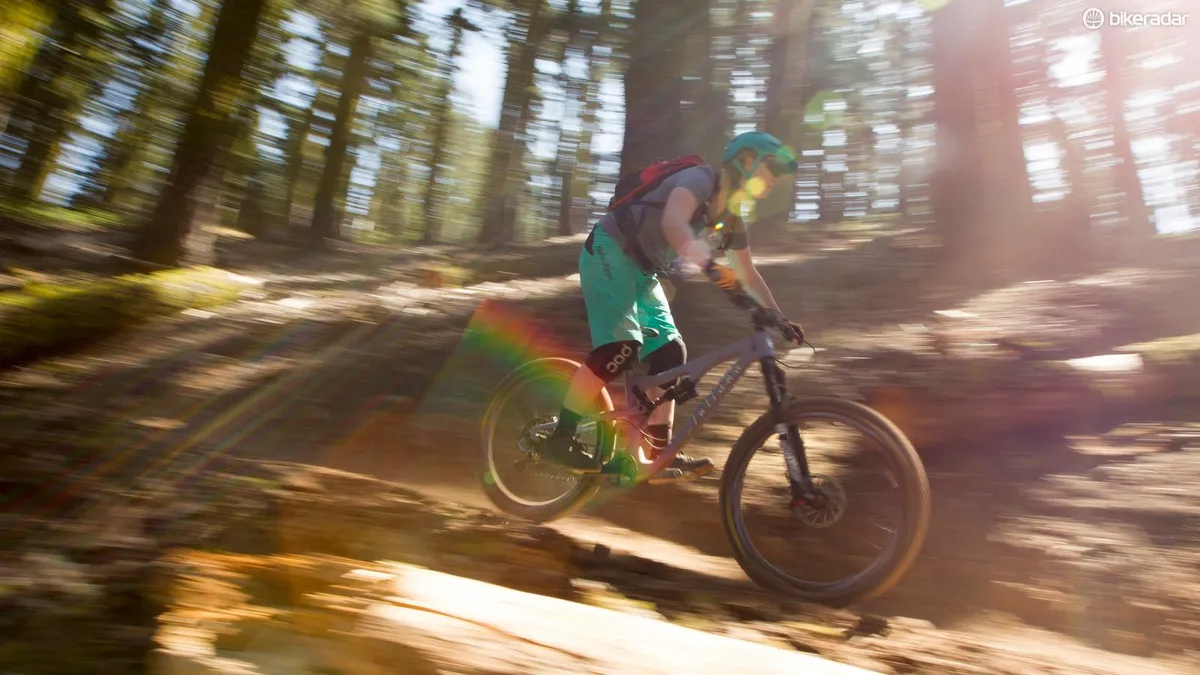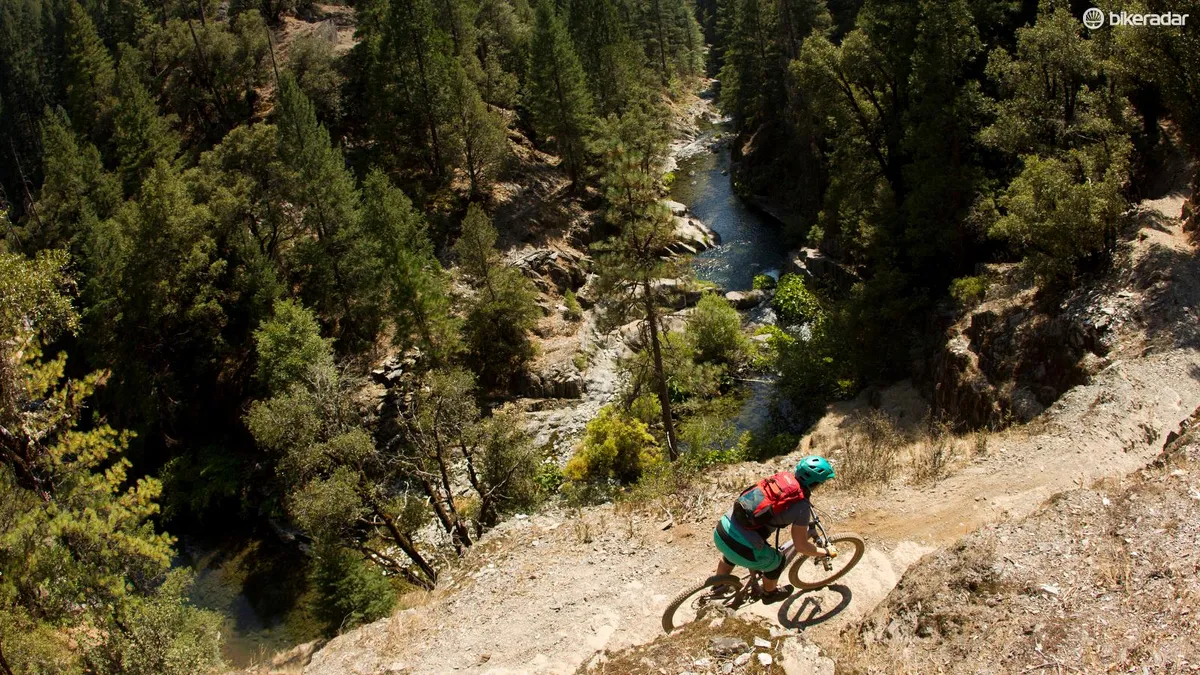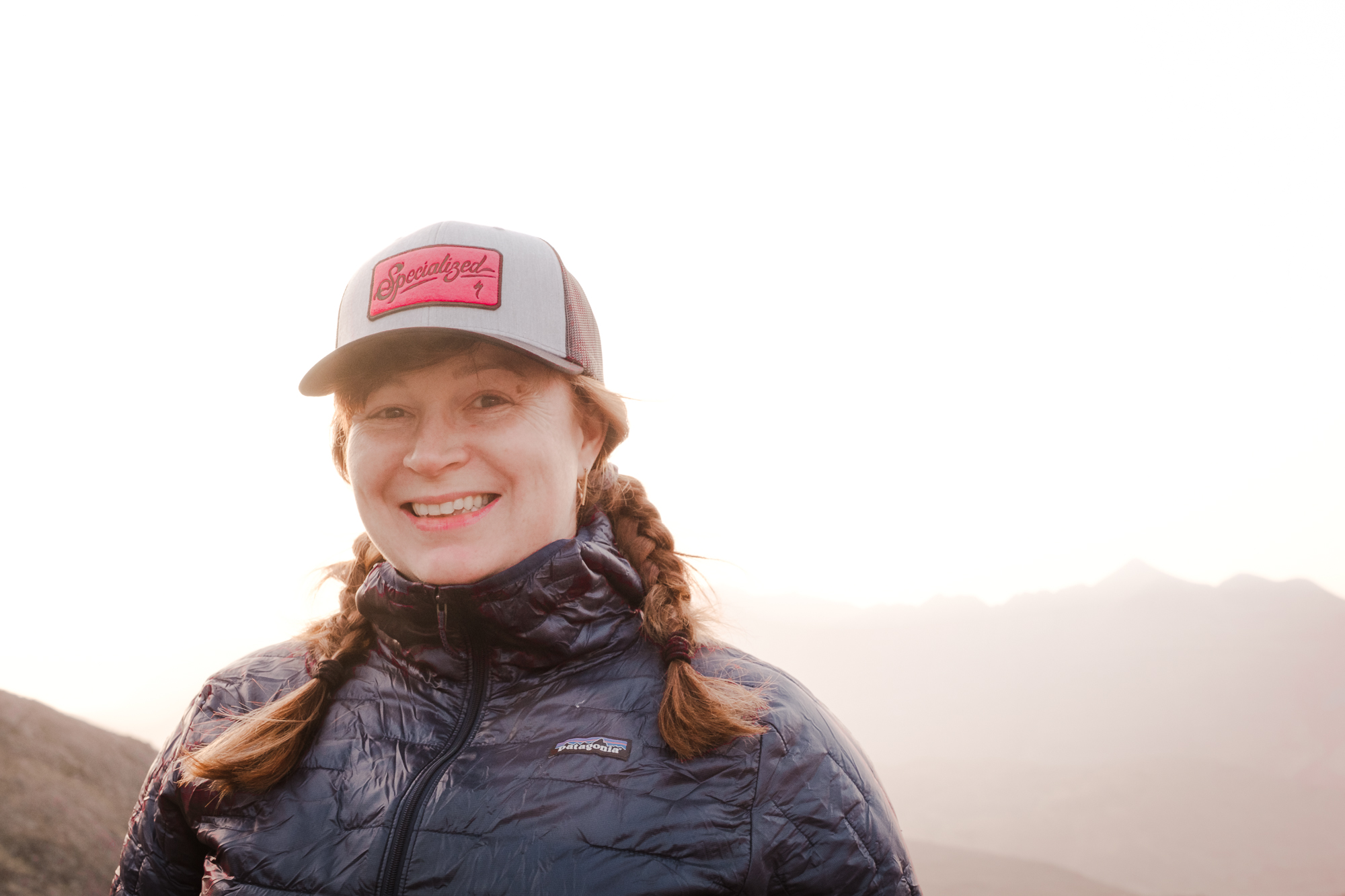Juliana Bicycles released the Roubion into the wild in 2014. Now, a new model with updated geometry and suspension linkage is hitting the market. BikeRadar was lucky enough to bag a first ride on the dry, dusty, rocky trails of the Sierra Nevada mountains of California.
The Roubion is a long travel women's-specific trail bike aimed squarely at the enduro market and those riders who are looking for a machine that can tackle technical descents without sacrificing climbing ability. Ridden by the Juliana SRAM Pro Team throughout the Enduro World Series, this 27.5, 150mm travel has proven a popular choice with many women.
Related: Pro Bike: Anka Martin's Juliana Roubion Carbon CC
With the Roubion being based on the Bronson frame developed by sibling firm Santa Cruz, this is a bike that in its various guises has taken on a world of punishment – and delivered. Both the Roubion and the Bronson get equivalent updates for 2016, with Juliana's designers seeing no need to alter geometry for female riders.
Katie Zaffke, brand manager, said that Juliana is "here to offer women the best trail-riding experience possible that comes with 20 years of experience – which is what the guys at Santa Cruz offer". In her words, the Juliana Roubion is less "a women's specific bike, and more a bike for specific women".
Having extensively ridden the original incarnation of the Roubion in the French Alps and across the UK I was keen to see and feel how changes to the Virtual Pivot Point (VPP) suspension linkage system and geometry felt in practice. And where better to test a Californian bike but on the dry dusty trails of California?
Ride and handling: nimbler, less twitchy and happier on climbs
Long, rocky mining tracks and trails around Downieville provided an excellent testing ground with plenty of twists, turns, chutes and rocky sections to put the Roubion through its paces.

A slacker head angle and new suspension linkage make the Roubion happy as hell on rocky terrain
The size guide for the Roubion puts me towards the top end of the medium frame size range. On the 2014 model, I found the reach on the medium too short and cramped, so opted for a size large with a shorter stem. Although this setup was an improvement, it still didn't feel quite right. I found the standover uncomfortably high, so I was curious to see if the update geometry would work in my favour – and it did.
The size medium on the new Roubion instantly felt like a better fit. The longer reach, facilitated by an effective top tube length of 598mm (previously 584.2mm) and 35mm stem, and coupled with a lower standover height, made the bike feel comfortable, secure and controlled.
On technical descents, the geometry tweaks have a noticeable effect. The new version feels like the Roubion has been working out since last year; a slacker, 66-degree head angle combined with the lower standover and newly lowered bottom bracket feel fast but secure, and a twitchiness I experienced last year has gone – I felt secure and planted on the bike, rather than a passenger.
Riding in the US meant swapping the brakes around the bars to a UK setup to avoid any disaster. Fortunately the SRAM Guide Ultimate brake levers make this a cinch.
The cockpit in general was blissfully minimalist – a single SRAM trigger shifter and a RockShox Reverb seatpost remote were the only things clutttering the Santa Cruz carbon bars (apart, of course from the Juliana grips, which for 2016 are colour matched to the frame). Juliana – which isn’t afraid of giving its bikes unusual paint jobs – has opted for a paint job it calls ‘stonewash purple’, which comes in a matt finish.
For 2016, those bars are now wider at 760mm, which I really appreciated. I found the 720mm bars on the previous model to narrow for comfort or control, but the additional 40mm made a big difference – though I might personally go even wider.
Descents in Downieville extend to a brake-busting 17km long, alternating between fast singletrack, rock sections, deep dusty corners and roots. There are a few intense climbs scattered here and there, and the Roubion ate them up aided by a newly steepened seat tube – from 73 to 74 degrees – which places rider weight over the bottom bracket, allowing you to put the power down without losing traction.
The one-degree difference may not sound a lot, but coupled with the other tweaks in the geometry and a lightweight carbon frame and wheels resulted in noticeably improved climbing ability over the previous incarnation. This is another area I felt a definite improvement on the original Roubion, where I sometimes lost traction on the climbs.
Frame and kit: redesigned linkage rings the changes
The new Roubion, alongside its siblings the Furtado and Santa Cruz Bronson and 5010, also benefits from a redesigned suspension linkage. Essentially, the lower link now lies above the bottom bracket in a recessed space, with the upper link connecting directly to the top tube, a system first seen on the Santa Cruz Nomad in 2014.
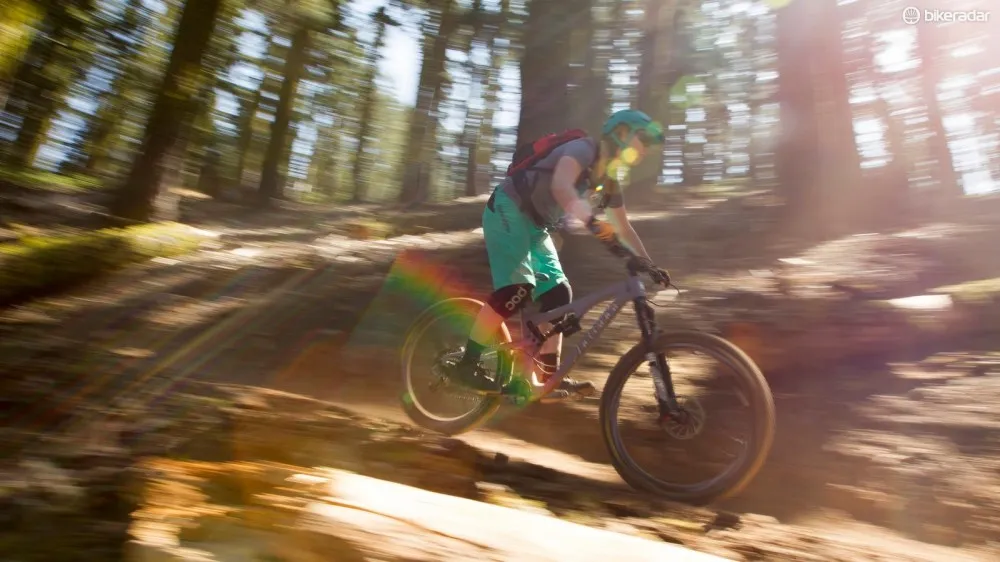
Juliana has lowered the standover and bottom bracket, and lengthened the top tube, bringing the sizing more into line with other brands
This new VPP linkage design provides a number of benefits. First, it helps protect the system from rocks strikes from below, something of an issue on the rock-strewn trails of Downieville. Secondly, it allows a shorter rear end when combined with the 148x12 hub width, and this makes a hell of a difference to the feel of the bike.
The resulting shorter chainstay length makes the ride snappier and responsive, agile through corners, and a lot more playful than the 2014 model. At speed, it's a bike that just wants to have fun, and gets airborne with the greatest of ease. Combine that with a tweaked suspension tune and I could really feel the acceleration pumping through terrain, yet it still remained stable and controllable at speed over rougher ground.
The Roubion CC XX1 I tested is a top-line model, and came with 148 x 12 Industry Nine hubs and 24mm carbon ENVE rims – lighter than those available for the Bronson. The ENVE rims are an upgrade option with the standard version coming with Easton ARC 24 rims.
Juliana has opted for RockShox forks and Fox shocks on all build options, and has retuned them to suit the ride and geometry. The CC XX1 model comes with a Pike RCT3 150mm on the front and Fox Float X Factory on the back.
The tune is designed to give a flatter overall suspension curve; increased sensitivity to small lumps and bumps which made the ride noticeably smoother over rough terrain, but more importantly provided better traction both ascending and descending, then a smoother feel through the travel on bigger features. Happily, it didn’t smooth the trail out completely, and I still had plenty of tactile feedback.
To improve the Roubion's capability on descents, the lower standover and lower bottom bracket combines with a slacker head angle (66 degrees) for confident handling on steep terrain.
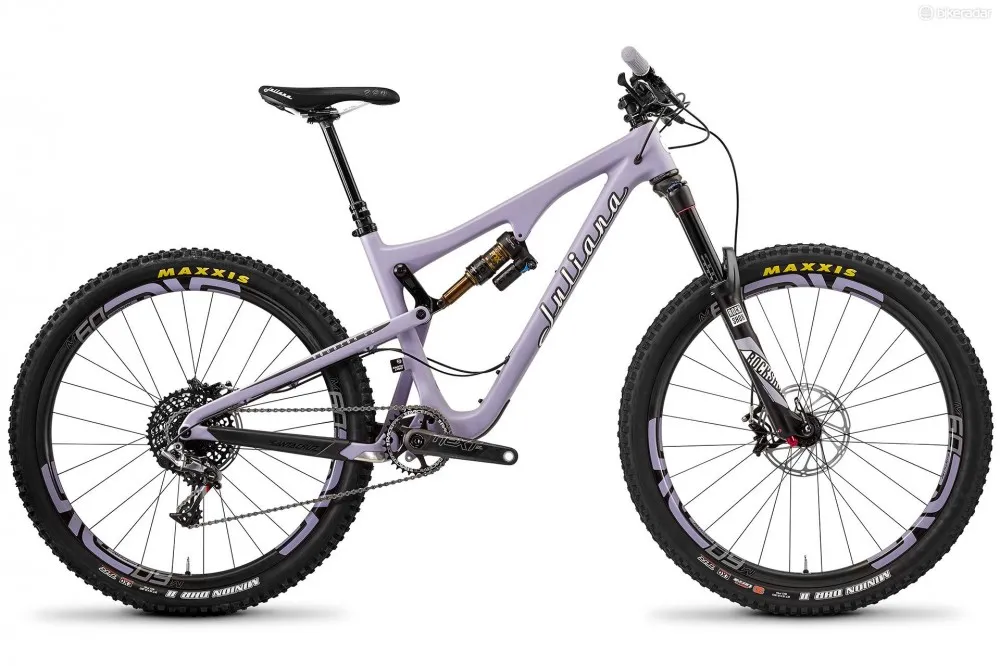
Head angle has been slackened to 66 degrees, with seat steepened to 74; the paint job is 'Stonewash Purple'
Other updates for 2016 include internal cable routing, and wider 31.6mm seatpost that's compatible with 150mm RockShox Reverb droppers, plus Santa Cruz chainstay protector.
At £5699 / $7899 / AU$11,049 for the Roubion 2 CC with XX1 groups and ENVE rim upgrade, this is a high-end bike that's not going to be within everyones budget. Juliana also does a version with a cheaper, slightly heaver Carbon C frame, and these start at £3099 / $3599 / AU$6,249 for a full build. However, you do get an exceptional ride for your money, there's no price difference between the Roubion and the equivalent Santa Cruz Bronson builds, and the frames come with a lifetime frame and bearing warranty.
Another point in favour of Juliana is the fact that the bikes are actually available now, rather than the release coming several months after the product reveal. So if you are in the market for one, you can get your mitts on one pretty much immediately.
Overall, the Roubion feels like a bike that can take on bigger terrain than the suspension suggests, without sacrificing either climbing ability or its playful feel on flatter terrain. It’s most definitely at home on the rough stuff, and is an ideal steed if you want to race enduro, or just ride big landscapes.
